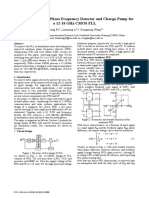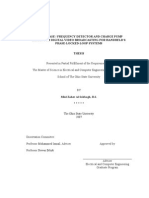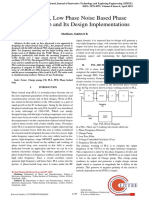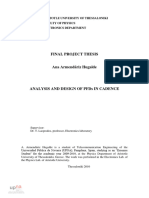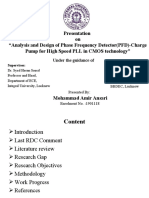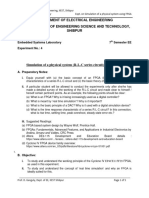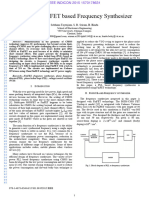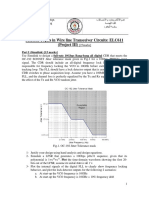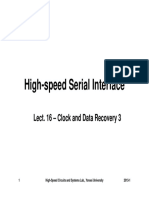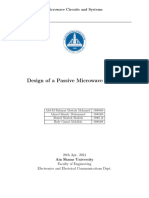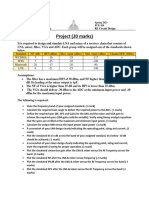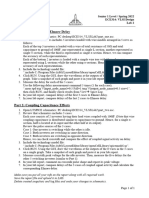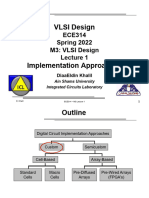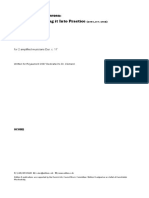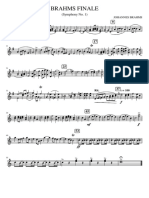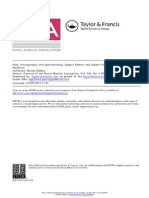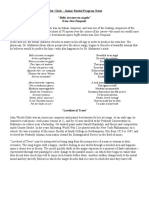0% found this document useful (0 votes)
20 views26 pagesPFD Simulations
The document discusses the design and simulation of a phase frequency detector circuit. It describes the components and operation of a phase frequency detector and shows the schematic of a modified true single phase clock D flip flop for use in a phase frequency detector. Simulation waveforms are presented for different phase relationships between the reference and feedback clocks.
Uploaded by
Ahmed ShafeekCopyright
© © All Rights Reserved
We take content rights seriously. If you suspect this is your content, claim it here.
Available Formats
Download as PDF, TXT or read online on Scribd
0% found this document useful (0 votes)
20 views26 pagesPFD Simulations
The document discusses the design and simulation of a phase frequency detector circuit. It describes the components and operation of a phase frequency detector and shows the schematic of a modified true single phase clock D flip flop for use in a phase frequency detector. Simulation waveforms are presented for different phase relationships between the reference and feedback clocks.
Uploaded by
Ahmed ShafeekCopyright
© © All Rights Reserved
We take content rights seriously. If you suspect this is your content, claim it here.
Available Formats
Download as PDF, TXT or read online on Scribd
/ 26




